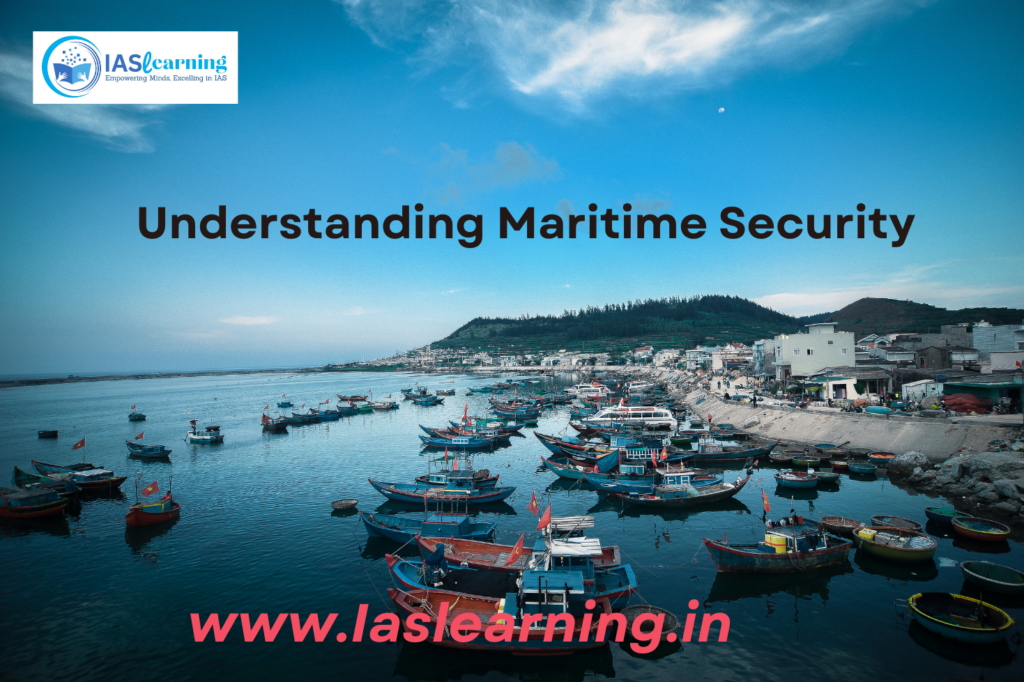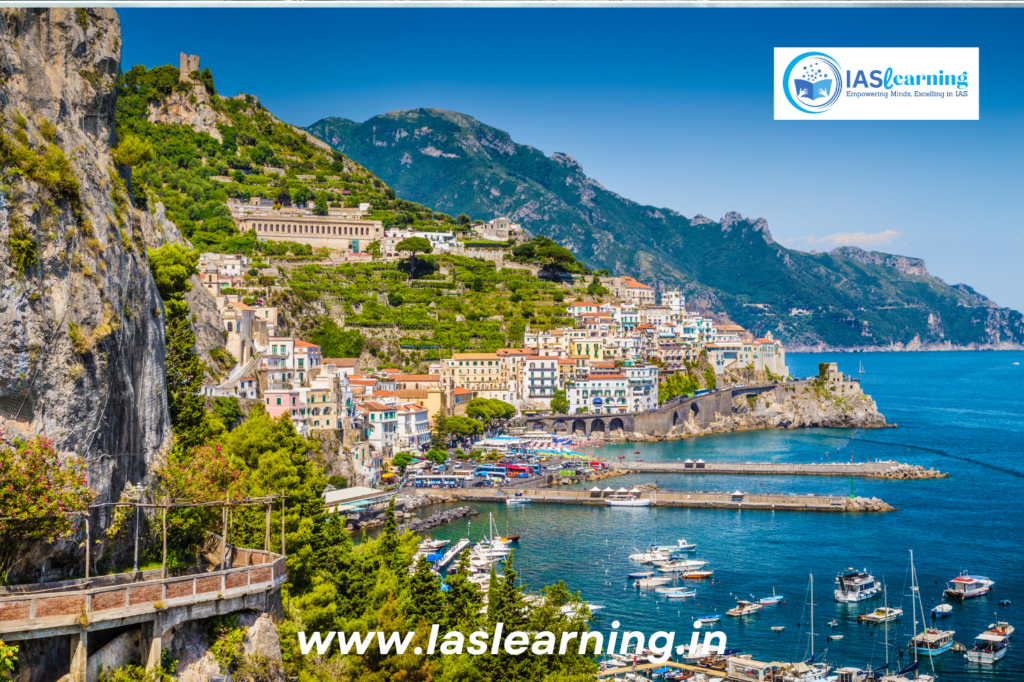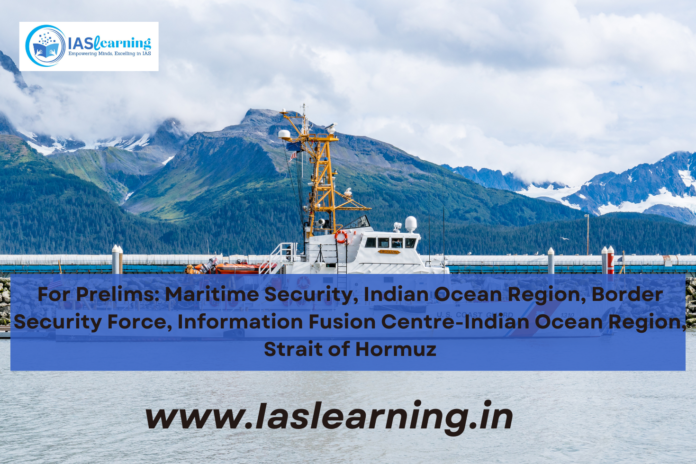Introduction
Understanding Maritime Security
Maritime security encompasses a broad spectrum of issues and challenges within the maritime domain. While there isn’t a universal definition, it typically addresses concerns related to national security, marine environment protection, economic development, and human security. This multifaceted concept extends beyond the vast world oceans and also pertains to regional seas, territorial waters, rivers, and ports.
Significance of Maritime Security
In general terms, the significance of maritime security cannot be overstated, given its impact on global, regional, and national levels. Here are some key aspects highlighting its importance:
Piracy
One of the most prominent issues in maritime security is piracy at sea. Piracy threatens not only the safety of mariners but also global trade and economic activities. Countering piracy is a shared concern for the international community.
Terrorist Attacks
Maritime security also addresses the risk of terrorist attacks originating from or taking place in maritime regions. Ensuring the prevention and response to such threats is a key priority for governments worldwide.
Environmental Damage
The ocean ecosystem hosts large-scale commercial operations, which inevitably lead to incidents that can harm the environment. Ensuring that these operations are carried out responsibly and that any environmental damage is minimized is a crucial aspect of maritime security.

For India
For India, maritime security holds distinct significance:
National Security
With a vast coastline spanning over 7,000 kilometers, maritime security is a critical aspect of India’s national security. The coastline’s sheer size presents unique challenges, including safeguarding against external threats and illegal activities.
Technological Threats
Advancements in technology have introduced new dimensions to maritime security. Cybersecurity and technological threats are increasingly relevant, demanding a holistic approach to address vulnerabilities in the maritime domain.
Trade Purpose
India’s trade activities, including exports and imports, largely occur through the shipping lanes of the Indian Ocean. Securing these Sea Lines of Communication (SLOCs) has become a vital issue for India in the 21st century. Ensuring the safety of these routes is essential for uninterrupted trade and economic growth.
Oceans are vast, covering the equivalent of approximately 72% of the Earth’s surface. This immense aquatic expanse teems with life, harboring a multitude of species and holding many secrets yet to be discovered. The oceans, with their deep, mysterious depths, play a vital role in regulating our planet’s climate and supporting its ecosystems.
The Significance of Coastal Areas
To delve into the importance of oceans and their coastal fringes, we must first understand the significance of coastal areas. Approximately 10% of the world’s population calls these coastal regions home, and astonishingly, about 40% of the global population resides within a mere 100 kilometers of the coast. These statistics underscore the profound connection humans have with the coasts, highlighting their role as hubs of human civilization and activity.
Coastal Cities in India

In the context of India, the allure of coastal areas is equally compelling. Three out of every four major Indian metropolises are situated along the coast. Cities like Mumbai, Chennai, and Kolkata boast stunning coastal locations, offering a unique blend of urban life and natural beauty. The ocean’s proximity has shaped these cities’ cultures, economies, and lifestyles, making them truly remarkable places to explore.
Coastal Population in India
Moreover, the population living in coastal districts of India constitutes a significant portion of the country’s inhabitants. Around 14.2% of India’s population resides in these coastal regions, further emphasizing the importance of coastal areas in the Indian context. The livelihoods, traditions, and well-being of millions are intricately tied to the sea.
This article will take you on a journey to explore the oceans and coastal areas, diving into their ecological, cultural, and economic significance, as well as the challenges they face in a rapidly changing world. We will also discuss the critical need for coastal management to protect these valuable regions for future generations.
India’s Vast Coastal Wealth
India, with its extensive 7,000-kilometer coastline, is a nation blessed with an abundance of resources and opportunities, making its coastal regions a treasure trove of possibilities. These coastal areas have played a pivotal role in the nation’s history, culture, and economic prosperity.
Coastal Habitat and Diversity
The Indian coastline provides a sprawling expanse of shores that have long been the habitats of diverse coastal communities and a rich array of vegetation. The coastal regions are home to unique ecosystems, from the mangroves of the Sundarbans to the coral reefs of Lakshadweep, each contributing to the biodiversity of the nation.
Gateway to the World
In addition to their ecological significance, India’s coastlines also serve as gateways to the outside world. They offer vital communication and business channels, fostering trade, cultural exchange, and international collaboration. India’s strategic location along the Indian Ocean makes it a hub for global interactions.
Maritime Trade Hub
A staggering 95% of India’s trade volume and 65% of the trade value are conducted through maritime transport. The maritime sector is the lifeblood of the nation’s economy, facilitating the import and export of goods. This reliance on sea routes underscores the importance of coastal regions in driving economic growth.
Coastal Cities and Ports
India’s coastal allure is further enhanced by the presence of three out of four major metropolitan cities, such as Mumbai, Chennai, and Kolkata, which have flourished along the coast. Additionally, India boasts nine coastal states, four union territories, and an impressive 1,295 islands dotting its coastline. The coastal areas host major commercial cities, strategic defense installations, nuclear energy facilities, petroleum refineries, and private enterprises. With 12 major ports and over 239 non-major ports, the coastline’s significance is amplified.
The Expanding Oceanic Traffic
With India’s growing economy and increasing global trade, oceanic traffic is expected to surge further. The nation has recognized the potential of its “Blue Economy,” focusing on sustainable use and conservation of marine resources. Key initiatives include the country’s port-led development plans, growth in coastal shipping, the establishment of trade protocol routes, and the blossoming cruise tourism industry. The ambitious Sagarmala Project aims to transform India’s coastline into a driver of economic growth and development.
Geopolitical and Security Concerns

While the coastal regions offer immense opportunities, safeguarding these waters from external threats and protecting India’s maritime interests are of paramount importance. The Indian Ocean region is a complex geopolitical landscape, with multiple stakeholders vying for influence. In this context, ensuring maritime security becomes a critical national objective. The Indian government, in coordination with its security and defense apparatus, is committed to securing its maritime interests and maintaining peace and stability in the region.
Challenges in India’s Maritime Security
India’s maritime security faces a complex set of challenges due to its unique geographical location and the evolving nature of global security threats. These challenges require a coordinated and adaptive approach to ensure the safety and prosperity of India’s coastal regions and maritime interests.
Geostrategic Location
India’s geostrategic location places it in proximity to major international shipping lanes, making it a critical player in global trade. While this offers economic opportunities, it also exposes the nation to potential security threats from both state and non-state actors.
Cross-Border Terrorism
One of the most pressing challenges is cross-border terrorism sponsored by inimical neighbors. Terrorist activities originating from neighboring countries and accessing India via sea routes pose a significant security threat to the nation.
Transnational Maritime Crimes
Transnational maritime crimes, such as narcotics and weapon trafficking, human trafficking, and other illicit activities, create security concerns for India’s maritime borders. These crimes often exploit the vastness and porosity of ocean routes.
Dense Fishing Traffic
The Indian cape experiences dense fishing traffic, adding complexity to maritime security efforts. Balancing the needs of the fishing industry with security measures is a constant challenge.
Increasing Maritime Incidents
India is a hotspot for maritime activities, with over 1,00,000 ships estimated to transit close to its shores annually. With the nation’s focus on promoting the blue economy, port-led development plans, growth in coastal shipping, trade protocol routes, cruise tourism, and the ambitious Sagarmala project, the likelihood of maritime incidents and security challenges is on the rise.
Coastline Vulnerabilities
The vulnerabilities of India’s coastline were starkly highlighted by the use of sea routes by terrorists during the 26/11 attacks. Securing such an extensive and varied coastline presents a formidable challenge, as the ocean itself is a vast and dynamic environment with countless opportunities for illicit activities.
Multifaceted Stakeholders
The sphere of ocean governance involves numerous stakeholders, each with specific roles and responsibilities. Key stakeholders include the Indian Coast Guard, Indian Navy, Coastal Security Police, Customs, Fisheries, Port Authorities, Intelligence Agencies, and various other central and state departments. Coordinating their efforts and ensuring seamless communication is essential for effective maritime security.
Strategy for India’s Maritime Security
Ensuring the security of India’s vast coastline is a multifaceted challenge, one that demands a comprehensive and coordinated approach. The nation’s maritime security strategy incorporates a range of measures and initiatives to safeguard its coastal regions and maritime interests.
Multi-Agency Concept
Central to India’s maritime security strategy is the multi-agency concept, which mandates cooperation, coordination, and institutionalized domain control among various agencies. This collaborative approach allows for the optimal utilization of limited resources, resulting in foolproof security measures. It ensures that each agency plays a specific role in securing the maritime domain, from the Indian Coast Guard to the Navy, to state and local law enforcement agencies.
Tiered Surveillance Mechanism
India has implemented a tiered surveillance mechanism, aimed at conducting in-depth surveillance. The Indian Coast Guard, in addition to its broader responsibilities, is specifically entrusted with ensuring coastal security within territorial waters. This approach provides a layered defense against threats, ensuring that security is not just a surface-level endeavor.
Standard Operating Procedures (SOPs) for Coastal Security
To enhance coordination among all stakeholders involved in coastal security, the Indian Coast Guard has promulgated Standard Operating Procedures (SOPs). These guidelines facilitate effective communication and responses in the event of a security breach, thus ensuring a well-coordinated effort.
Coastal Security Exercises
Regular exercises like ‘Sagar Kavach’ are conducted to maintain a high degree of preparedness. These exercises simulate immediate threats and test the responsiveness of the security apparatus. They serve as a vital part of the training and preparedness efforts to ensure a rapid and coordinated response.
Infrastructure Enhancement
The Government of India has initiated a focus on enhancing the infrastructure and assets of the Indian Coast Guard and other relevant agencies. This includes investments in surveillance and patrol capabilities at sea. Strengthening security at non-major ports, setting up State Maritime Boards by coastal states, and issuing biometric identity cards for fishermen are all part of this comprehensive strategy.
Integration of Technology
Technology plays a pivotal role in India’s maritime security. The Coastal Surveillance Network (CSN) integrates modern technology with surveillance methods. This network enhances real-time monitoring and enables quick responses to any potential security threats.
Joint Coastal Patrols
The Indian Coast Guard collaborates with coastal police forces to conduct Joint Coastal Patrols (JCP) across all coastal states and union territories. This joint effort extends the reach and effectiveness of maritime security operations.
Conclusion
Coastal security is not just about protecting the coastline; it’s about maintaining law and order close to the coast, a vital subset of ocean governance. The multi-agency, tiered surveillance, and technology-integrated approach have proven to be successful in the current security environment. The synergy and coordination achieved through this strategy are crucial and must be sustained.
India’s vision for maritime security is not just about security but also about propelling the nation to the forefront of the global maritime sector. The Maritime India Vision 2030 serves as a blueprint for India’s coordinated and accelerated growth in the maritime sector over the next decade. It encompasses not only security but also economic growth and prosperity, making it a holistic approach to India’s maritime future.

